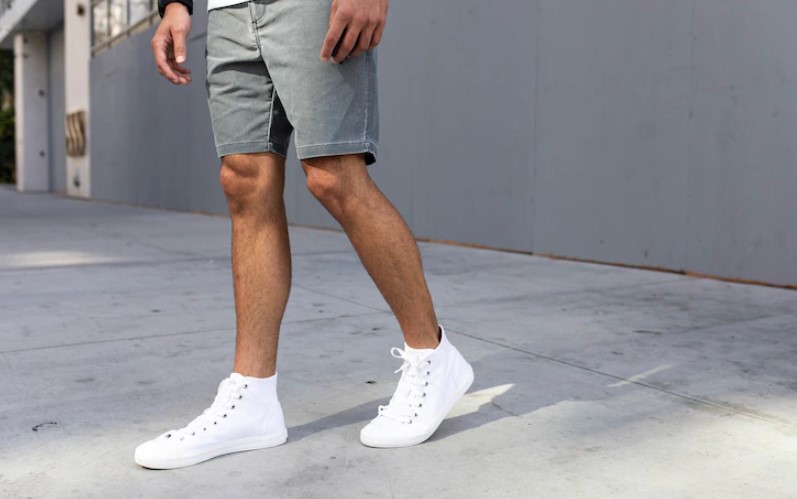It costs a lot to buy shoes that keep you cool, weigh as little as possible, or protect you optimally. The cost of innovation and the time and money it takes to get it drives the prices. You will have to pay more if there aren’t any economies of scale in the manufacturing process. In this case, the law of supply and demand is working. Fashion brands like Nike, Adidas, and Puma charge more for their products because they use better materials than traditional retail brands.
So, because high-quality materials are more costly than low-quality materials, clothing and shoes will always be more costly. Selling prices only go up when marketing costs increase and more expensive marketing materials are used.
What Are the Factors that Influence Pricing?

Manufacturing Cost
Over 1 million people work in Chinese factories and other countries worldwide, making sneakers for companies like Nike, Puma, and Adidas. It cost Nike $28.50 to make and ship one pair of sneakers in 2014. This was what other companies charged for the same product at the time. According to a study of Nike’s prices, each pair of shoes costs the company $27.50 to make and $1 to ship from China.
In the last few years, the labor cost in China has gone up, hurting profit margins. Some companies have moved their manufacturing operations to countries like Vietnam, Indonesia, and Thailand. In addition, the major shoemakers are constantly switching manufacturing jobs from humans to robots to cut costs and speed up production.
Partnerships for Branding

A big part of the value of sneakers comes from the fees paid to celebrities who endorse them to get people to purchase the brand and keep them returning for more. People who were good at sports helped Nike and other shoe companies make shoes that would help them improve at sports.
High-performance shoes might also be good for people who buy them because they provide optimal results.
Nike’s Air Jordan sneakers, first made in 1985 and used to help make Michael Jordan a wealthy athlete, is one example of expensive endorsements. If Forbes is correct, the basketball legend made $145 million in 12 months ending in May 2019, with $130 million coming from Nike. This is about 20 years after he left the court.
With Russell Westbrook, Chris Paul, and hundreds of other professional athletes, the Nike Jordan brand has a lot of endorsements.
Because young people associate sneakers with fashion and sports, companies have teamed up with well-known people in the arts and entertainment industries to develop new sneakers and help promote them. Yeezy Boost sneakers were made with help from Kanye West, for example. Because many people pre-ordered them online, the $315 shoes sold out in minutes of their February 2015 release.
Many famous people work with shoemakers to make their customized shoes. Rihanna, Kendall Jenner, and Jay-Z are just a few of them.
It affects the price of shoes sold by the top sneaker brands because of the competition. Companies that make sneakers spend a lot of money on endorsements because they know their customers will pay more for shoes linked to their favorite athletes or entertainers.
Social Media and Resellers
When a celebrity is linked to a limited-edition shoe brand, some people become obsessed with them and will scale any heights to get their hands on them. Social media helps to make them want more.
They do this to get people interested in their products by posting pictures of the most recent sneakers on social networking sites.
Also, the secondhand market makes people want to buy sneakers more and more. Sellers often wait in line at brick-and-mortar stores to purchase limited editions they sell online later for a profit.
Getting a celebrity to endorse your product or run a global advertising campaign costs a lot. Nike spends a lot of money on CAD systems and material mixing procedures that are very expensive to stay on top of materials design and consumer sentiment, which means they have to be very careful when doing them.
It’s expensive to buy things like Fitbits and iWatch apps from running “lifestyle” companies, but if you’re a “runner,” they have everything you need. The cost of these extra benefits is paid by the price of Nike products, which helps pay for the program.
Expect Nike, Puma, Adidas, or any other reputable brand to charge a lot more for its “high quality technological” products because they are “aspirational.” People expect the prices to be high and lofty for them to meet this expectation.
Most people don’t mind spending $75 to buy a favorite brand. Time and money are needed for people to become excited about a brand and be loyal to it. Because psychological branding goes beyond the product, it costs a lot of money.
Cutting-edge technology

Making high-end goods like Nike, Adidas, and Puma takes a lot of new and advanced technology. Nike, for example, often says that it comes up with new footwear technology before anyone else does, which is true.
Suppose you wish to see how this works; check out its HyperAdapt shoe. HyperAdapt shoes don’t need to be tightened after you put them on. It has sensors that make the shoe fit your foot, not the other way around, so it doesn’t hurt.
There are two buttons on the shoe that you can use to make the shoe fit better until it’s just right. Other technological changes have been made to Nike’s footwear, too. However, HyperAdapt isn’t the only one of these changes that can be made.
Nike says that the Nike Zoom Butterfly 4 gives you a little bounce in your stride if you want to run faster on long runs. You could finish a four-hour marathon nine minutes more quickly than you would in two hours and twenty minutes.
The Final Word
Generally, the high prices associated with better brands such as Nike, Puma, and Adidas are driven by the production cost, promotional costs, and, more so, the demand and availability of the products. It is hard to shy away from these brands because they offer quality products that are functional, casual, and stylish.
Reference 1: Why is Nike so Expensive and Popular? Are Their Products Worth It? – Trails and Freedom
Reference 2: Nike vs Adidas: Who is leading the market? (startuptalky.com)

